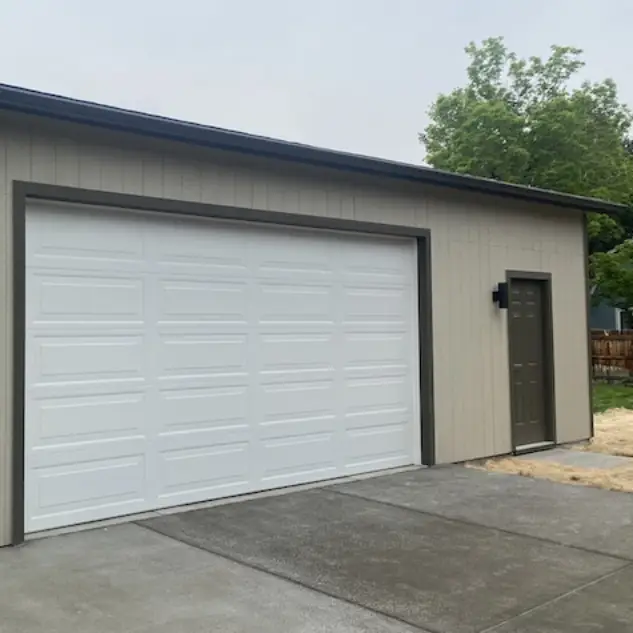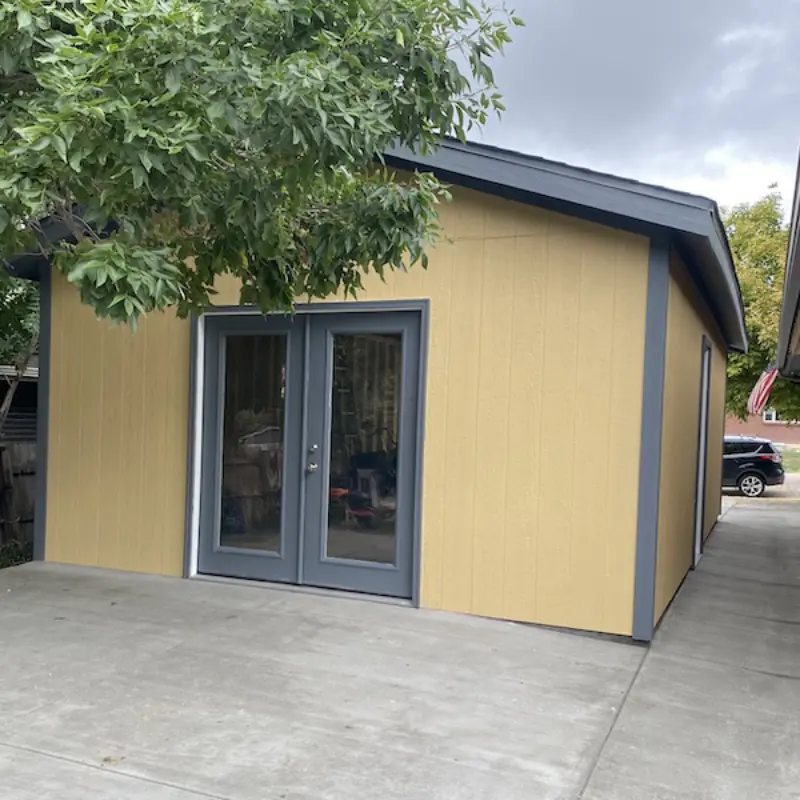How to Run Power to a Detached Garage
Bringing electrical power to a detached garage opens up a world of possibilities, from turning it into a fully functional workshop or cozy retreat to simply having the convenience of automatic doors and lighting. However, running electricity to an outbuilding is not just about comfort—it’s also about safety and legality. Before embarking on this project, it’s essential to understand the steps involved and adhere strictly to local codes and regulations.
CONTACT US

Planning Your Electrical Needs
Before you begin laying cables or installing fixtures, it’s crucial to plan your electrical setup based on how you intend to use your detached garage. Here’s what to consider:
1. Determining Your Power Requirements
Assess the equipment and appliances that will be operating in the space—will you need outlets for power tools? Are there plans for heating or cooling systems? Consider future usage as well; it may be wise to install more capacity than currently necessary.
2. Consulting with an Electrician for Professional Advice
Even if you’re a seasoned DIY enthusiast, consulting with a licensed electrician can provide valuable insights. They can help ensure that your planned system meets all requirements and suggest efficient ways to achieve your goals within code regulations.
An expert will also advise on whether the existing service panels can accommodate additional loads or whether they might require an upgrade, helping avoid overloading circuits which could lead to trip breakers causing hazards.
Obtaining Necessary Permits
Before any work commences, securing the proper permits is a critical step in running power to your detached garage. This ensures that all electrical work complies with local building codes and safety standards.
1. Steps Involved in Securing Local Permits
The process for obtaining permits varies by location but typically involves submitting detailed plans of your project to the local municipal office or building department. These plans should include specifics about the wiring, the types of fixtures being installed, and how power will be run from the main house to the garage.
2. Importance of Adhering to Building Codes and Regulations
Compliance with building codes not only keeps you legally covered but also ensures that electrical installations are safe for use. It’s essential to follow these regulations closely as they’re designed to prevent fire hazards, electrocution risks, and other potential dangers associated with improper installation.
Non-compliance can lead to hefty fines even requiring a complete redo of work that had been done without approval.
Choosing the Right Method for Running Power
Selecting the appropriate method to run power from your home to a detached garage is a decision that affects both functionality and aesthetics. Here’s what you need to consider:
A. Direct Burial Cable Versus Overhead Lines – Pros and Cons of Each Option
1. Direct Burial Cable: This involves burying electrical cable underground, which is not visible above ground and therefore does not affect landscaping or views. However, it requires trenching work, which can be labor-intensive.
2. Overhead Lines: These are easier and quicker to install but can be unsightly and may pose risks during severe weather conditions due to excessive exposure to the elements.
B . Materials and Tools Needed for the Job
Depending on the chosen installation method, you will require a different set of materials and tools.
For direct burial cables, you’ll need heavy-duty wire-rated for outdoor use and a conduit to protect it along its length, and digging equipment to create the required trench depth as specified by local codes.
On the other hand, overhead lines might necessitate pole fixtures securely supporting wiring across the distance involved.
Both methods also call for various connectors and junction boxes to ensure connections are safe and secure in addition to standard electrician’s toolkit items like wire strippers, voltage testers, etc.
Safety Precautions
When embarking on the project of installing power in a detached garage, it is essential to prioritize safety. Here’s a comprehensive guide covering the necessary precautions:
- Understand Local Codes and Regulations: Before you start any work, familiarize yourself with local building codes and obtain all required permits. This ensures that your installation complies with safety standards.
- Turn Off Power: Always begin by turning off the main power at the breaker box to prevent electrical shock or other accidents.
- Use Proper Tools and Equipment: Employ insulated tools rated for electrical work and wear personal protective equipment (PPE) such as gloves, goggles, and non-conductive footwear.
- Trenching Safely: If you need to run underground cables from your house to the garage, dig trenches according to code specifications—deep enough to protect against accidental damage—and use conduit approved for direct burial.
- Cable Selection & Installation Standards: Choose cable types that are appropriate for outdoor use if they will be exposed to elements; within walls or buried must meet different criteria than those used indoors or above ground level.
- Conduit Usage: Install conduits correctly—whether metal or PVC—to shield wires from environmental hazards while allowing future maintenance access without having too much difficulty pulling new wire through if needed later down the line!
- GFCI Protection Required: Ground Fault Circuit Interrupter outlets should be installed anywhere where moisture might present an issue like outdoors near doorways or inside garages because these devices help reduce the risk of electrocution by cutting off electricity flow when an imbalance is detected between incoming outgoing currents, which could indicate someone is being shocked.
- Surge Protection Advised: To safeguard electronics appliances against voltage spikes caused by lightning strikes or surges consider adding a whole-house surge protector panel.
- Professional Inspection Recommended: Once completed, have a certified electrician inspect to ensure everything is up to par to avoid potential fire risks associated with improper wiring techniques, overloaded circuits, etc.
- Regular Maintenance Checks Essential: Maintain the system by regularly checking connections for corrosion-free tightness, avoiding buildup of flammable materials around areas and hotspots created due to high usage levels.
Professional Solutions
Opting for professional services like Vertical Contracting provides peace of mind through expert craftsmanship backed by experience:
Expertise
Professionals bring years of experience which means they are up-to-date on all safety standards, ensuring installations meet legal requirements without compromising quality assurance aspects either!
Efficiency
With their proficiency contractors can complete jobs faster than amateurs might manage partly because they know exactly what needs doing and how best to go about it, minimizing disruptions during the construction phase.
Liability insurance coverage holds companies accountable and protects property owners against damages incurred while work is being carried out on the premises.